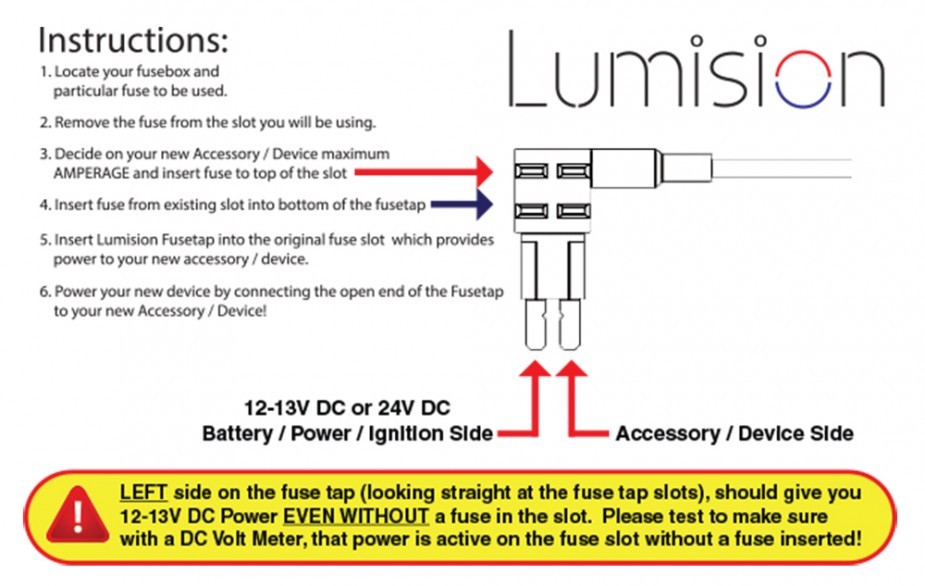Auto Fuses are essential components in any vehicle’s electrical system, protecting circuits from overloads. This article explains how auto fuses work, specifically focusing on the use of fuse taps for installing accessories like dash cams. Understanding the correct way to use a fuse tap ensures the safety and reliability of your car’s electrical system.
What is a Fuse Tap?
A fuse tap allows you to add an additional circuit to your car’s fuse box without needing to splice wires. It essentially piggybacks off an existing fuse, providing power for your new accessory. Figure 1 illustrates the basic concept of a fuse tap. This device allows you to add a new fuse for your accessory while retaining the original circuit protection.
Figure 1. Fuse tap instructions.
How Does a Fuse Tap Work?
Internally, a fuse tap is configured as shown in Figure 2. The original fuse (F2) is removed and replaced with the fuse tap. The original fuse is then inserted into the lower slot of the tap. A new, lower amperage fuse (F3) is inserted into the top slot to protect the newly added accessory circuit, in this example, a dash cam.
Figure 2. “Fuse tap” internal configuration.
Common Misconceptions: Series Wiring
A common mistake is wiring the fuse tap in series, as shown in Figure 3. While all fuses are technically wired in series with their respective loads, incorrectly inverting the fuse tap places both the original fuse (F2) and the accessory fuse (F3) in series with the new accessory.
Figure 3. Incorrect: Fuse tap inverted.
This configuration means if the original fuse (F2) blows, both the original circuit and the accessory will lose power. Because the accessory fuse (F3) is typically smaller to protect the lower-power device, it’s likely to blow first in a fault condition, leaving both circuits without power unnecessarily.
Correct Wiring and Fuse Functionality
Wiring the fuse tap correctly ensures that each circuit has independent protection. Fuses serve two primary purposes:
- Circuit Protection: They limit current flow, preventing damage to wiring and components in case of a short circuit or overload.
- System Protection: They safeguard the overall electrical system by preventing excessive current draw that could affect other circuits.
Adding an unnecessary fuse in series provides no additional benefit and can lead to confusion and unnecessary troubleshooting. The correctly installed fuse tap already provides the necessary protection for both circuits. In a 15A circuit, using a 5A fuse for the accessory ensures that if the accessory malfunctions and draws more than 5 amps, only the 5A fuse will blow, leaving the 15A circuit and its associated components unaffected.
Conclusion
Using an auto fuse tap correctly is crucial for safely adding electrical accessories to your vehicle. Understanding the internal workings of a fuse tap and avoiding the common mistake of series wiring ensures reliable operation and protects your car’s electrical system. Always follow the manufacturer’s instructions and choose the correct amperage fuse for your accessory to prevent damage and ensure proper functionality.

